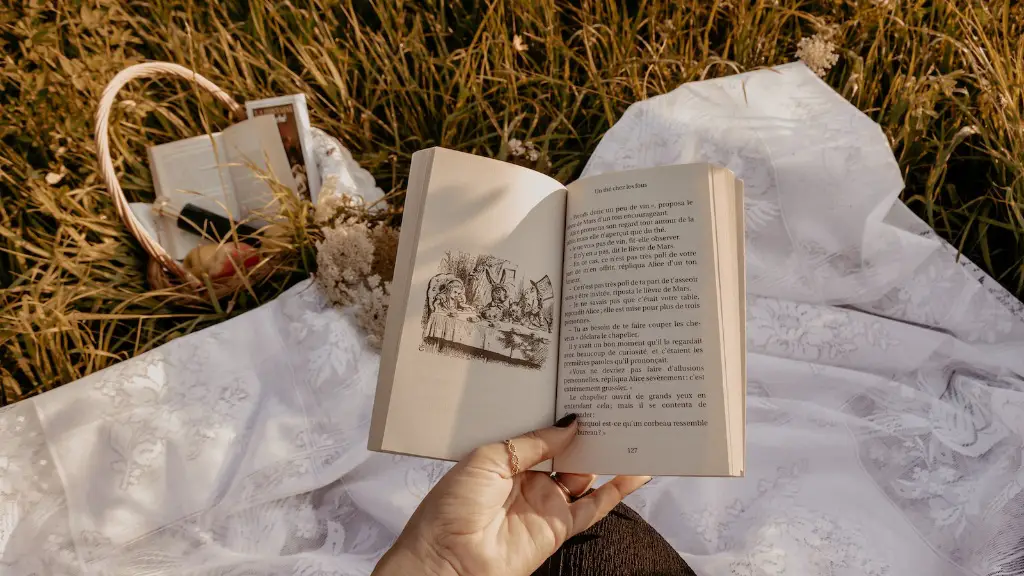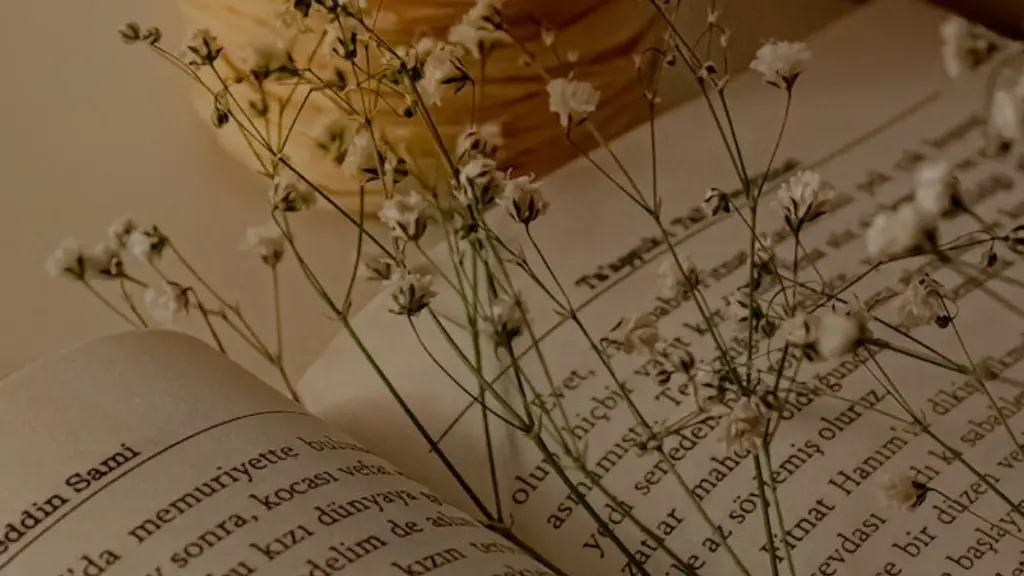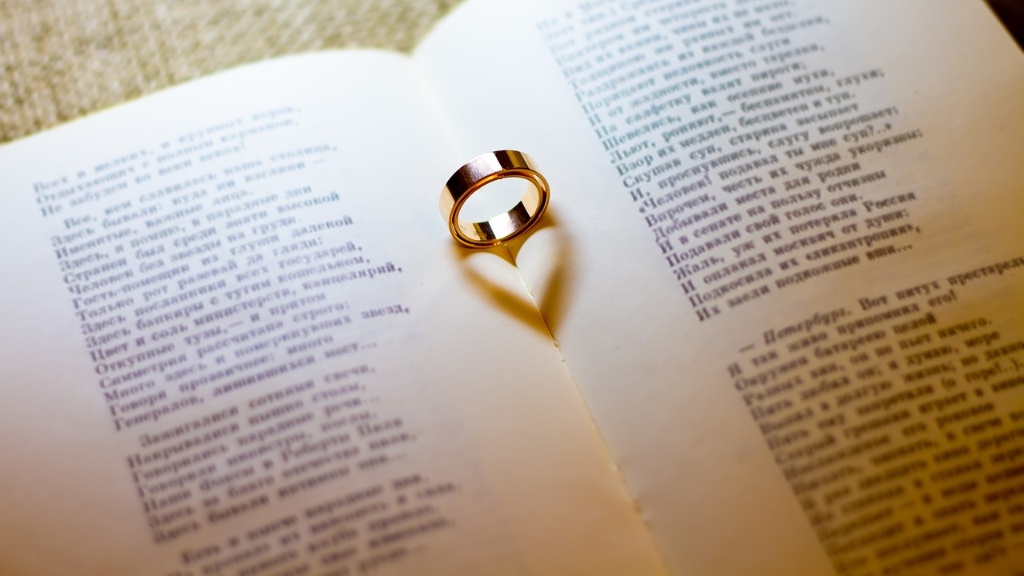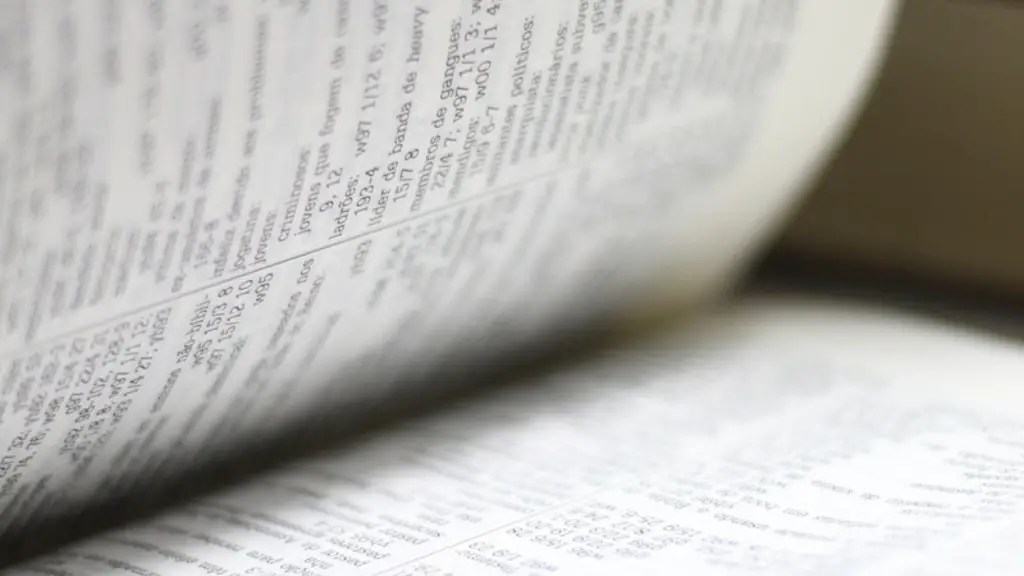Spoken poetry is like a free-flowing river that is constantly changing in its shape and flow. We know that the river is comprised of multiple streams, which in poetry are called stanzas. But, when it comes to the number of stanzas in spoken poetry, it is a surprisingly tricky question to answer.
We can find various examples of spoken poetry in a number of different formats – from flash fiction to slam poetry. It is performed in a variety of venues, from open mic nights at bars to poetry slams in clubs to online platforms such as YouTube and Instagram. While each of these formats can sometimes have different ways of expressing themselves, they all fall under the umbrella of spoken poetry.
When it comes to the number of stanzas in spoken poetry, there is no set convention. It is often dependent on the style and length of the poem, as well as the individual poet’s preference. For example, a poem composed of a single spoken piece with an introduction and a conclusion could be considered a two-stanza poem. On the other hand, a poem with multiple interwoven pieces and transitions could be considered to contain four or more stanzas.
As far as conventional verse structure for stanzas in spoken poetry goes, there is no real “rule”. The poet is free to experiment and explore any format they deem effective. It is up to the poet to decide how they want to craft their work and how they want to connect the pieces. Some poets may opt for a traditional structure with a quatrain, followed by a sestet, then a couplet, etc. Others may not use a traditional structure but instead develop a structure on their own that better suits their message or purpose.
Of course, there are other factors at play when considering the number of stanzas in a piece of spoken poetry. These include the length and content of each individual piece as well as the order in which the pieces are placed. In addition, when creating a spoken poetry piece, the poet must decide on the number of words that fit within each stanza and how to create a flow across all the stanzas. It is ultimately up to the poet to decide how many stanzas their poem should contain and how to effectively transition the different pieces within their poem.
In the world of spoken poetry, there are no real rules or boundaries when it comes to how many stanzas should be in a poem, and this is an integral part of the craft. It is ultimately up to the poet to find their artistic expression and craft a piece that meets their needs. By exploring different structures and experimenting, the poet is free to find the perfect balance of length, flow, and meaning that is right for them.
Word choice in Spoken Poetry
The word choice used in spoken poetry is an essential element that can elevate a poem or drag it down. A poet must carefully select the right words and make the right combination of them to create the intended impact. A poet has to take into account the tone, the subject matter and the intended audience when doing this, so that the poem resonates with them. Additionally, the words used in spoken poetry should be captivating so that listeners get caught up in the story. They should also be chosen based on the flow of the poem, so that it doesn’t feel choppy or stilted.
The words in spoken poetry should also evoke emotions in the listener. This can be achieved using poetic devices such as metaphors and similes. By using these devices, a poet can create powerful images in the listener’s mind that heighten the emotion of the poem. Additionally, the words used in spoken poetry should be descriptive enough so that the audience can immerse themselves in the story. This can be done through the use of vivid descriptions and imagery. Finally, the words used in spoken poetry should be carefully selected to ensure that they convey the intended message clearly.
The right choice of words can make or break a poem. A poet must take the time to carefully select their words and craft them in a way that will have the intended impact on the audience. By choosing their words carefully, a poet can effectively create an emotionally charged work of art that captures the imagination of the listeners.
Rhythm and Meter of Spoken Poetry
The rhythm and meter of spoken poetry is a key element that contributes to the overall impact of the poem. The rhythm and meter of a poem can make it more engaging for listeners, as it helps to create a sense of flow. Additionally, the rhythm and meter of spoken poetry can add emphasis to certain words and create a more inviting atmosphere for the listeners to get lost in.
The rhythm and meter of a poem are created by stringing together words, phrases and sentences in patterns. These patterns can be as simple or complex as a poet desires, as long as they create the desired effect. Additionally, the rhythm and meter of a poem can be used to slow down or speed up the pace of the poem, as well as to emphasize certain aspects of the poem.
When it comes to finding the best rhythm and meter for a spoken poem, it is up to the discretion of the poet. They must decide what works best for their poem and how to best create the desired atmosphere with their choice of rhythm and meter. Additionally, they must ensure that the rhythm and meter they choose do not interfere with the flow of the poem or disrupt the emotion they are trying to convey.
The rhythm and meter of spoken poetry can have a huge impact on the overall feel, atmosphere and impact of a poem. The right choice of rhythm and meter can bring the poem to life, while a bad choice can make it dull and unappealing. Therefore, poets must be aware of the importance of rhythm and meter and ensure that they are selecting the right ones for their poem.
Editing a Spoken Poem
The editing process is a key part of spoken poetry. A poet must always review their work and make changes where necessary to improve it. The editing process can range from making minor adjustments like tweaking a sentence here and there to more major changes such as reordering whole sections.
When it comes to editing a spoken poem, the poet must always be mindful of the impact their changes can have. They should take into account the poem’s overall message and how the changes would affect that message as well as the emotions of the audience. Additionally, they must consider the flow of the poem and ensure that it makes sense both orally and on paper.
Finally, the poet should ensure that all their changes are necessary and have a purpose. Too many unnecessary changes can be distracting and make the poem seem cluttered, while too few can make the poem seem incomplete. The poet must find the right balance between the two so that their poem has the impact they desire.
Editing a spoken poem can be a daunting task, but it is an essential step in the crafting process. By taking the time to properly review and adjust their work, a poet can ensure that their poem is the best it can be and that it has the desired impact on their audience.
Importance of Performance in Spoken Poetry
The performance of spoken poetry is just as important as the words that are used to create it. The poet must not only be confident in the words they are saying, but must also be able to transport the audience to another realm.
An effective performance of spoken poetry should be intriguing, tantalizing and engaging. It should stir up emotions and draw listeners in with short pauses, subtle vocal inflections, and carefully chosen body language. The poet should be able to deliver each word with conviction and have the ability to connect with their audience.
A poet should also be aware of the visual element of their performance. They should dress and act in a way that resonates with the poem they are presenting. For example, they may choose to wear a certain color or style of clothing to symbolize a particular emotion or concept within the poem.
The performance of spoken poetry is an essential element of the craft. It is the poet’s opportunity to bring their poem to life and make a lasting impact on their audience. By recognizing the importance of their performance, a poet can ensure that their poem has the desired effect on their listeners.
Publishing a Spoken Poem
Publishing a spoken poem is a great way for poets to share their work with the world. As more people become familiar with spoken poetry, more opportunities to get published are being created. There are now a number of publications and websites dedicated to featuring spoken poetry from all kinds of different poets. Additionally, poets can post their work to social media platforms such as Instagram and YouTube.
When looking to publish a spoken poem, it is important to find the right platform. Poets should research which platform best suits their individual needs and aligns with their goals. They should also take into account their target audience when selecting a platform.
Additionally, poets should always take the time to polish their work before submitting it for publication. This includes a thorough editing process as well as practice performances that allow poets to pinpoint any weaknesses they need to address. Additionally, poets should proofread their work carefully to avoid any mistakes.
Publishing a spoken poem is a great way for poets to share their work with the world and open up avenues for collaboration and growth. By taking the time to prepare for publication and finding the right platform, poets can create and publish works of which they can be proud.





